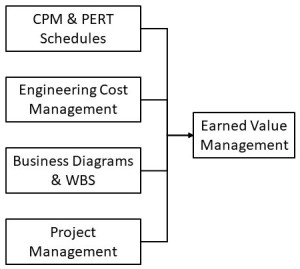2013 is the 10th anniversary of the publication in The Measurable News (March & Summer 2003) of Walt Lipke’s seminal paper Schedule is Different, introducing the concept of Earned Schedule (ES) to the world. This milestone was celebrated at the inaugural Governance and Controls Symposium held in Canberra earlier this month.
One of the notable features around ES has been the amount of hostility towards the concept generated by traditional Earned Value advocates (for an overview of ES see: http://www.earnedschedule.com/).
Everyone who understands EV recognises traditional EV is a very useful cost predictor and also recognises that the traditional SPI and SV calculations lose relevance later in the life of a project and fail completely if the project overruns time (ie, in approximately 80% of projects SPI and SV are less then optimal). To resolve this problem, the traditionalists suggest ‘looking to the CPM schedule’ for answers and decry ES.
Unfortunately, whilst a reliable and accurate CPM schedule is a critical underpinning of any competent EV system, CPM itself is a ‘wildly optimistic process’, see: http://www.mosaicprojects.com.au/Resources_Papers_117.html
One step towards eliminating this destructive debate was achieved this month – at last there is definitive research that validates ES as a technique. A research thesis from the AFIT (US Air Force Institute of Technology) Masters student, Capt Kevin Crumrine compares EVM and Earned Schedule indicators on US DoD ACAT 1 programs (for non-military types – ‘big’ programs). The thesis documents a series of five descriptive statistical tests conducted on the Earned Value data for 64 Acquisition Category (ACAT) I MDAP’s. The research found that Earned Schedule was a more timely predictor of schedule overages than Earned Value Management.
Unfortunately the statistical data did not compare ES with the CPM predictions. The thesis notes ‘One shortcoming to this research is the inability to map the Earned Schedule data to the critical path, but we consider Earned Schedule to be a strong tool for schedule prediction at the summary/contract level.’ The stated reason was ‘Our example produced earned value data no deeper than the Work Breakdown Schedule (WBS) level 3 (ex: WBS Element 1.2.3). The Critical Path data is collected much deeper, as detailed as WBS level 7 (ex: WBS Element 1.2.3.4.5.6.7). This disconnect prevented us from conducting a detailed analysis’
My feeling is the detailed nature of Capt Crumrine’s analysis meant the researcher could not see the ‘wood for the trees’. The only date that really matters on most projects/programs is the completion date! The level the data is collected at does not matter; neither does the activity/work package that that actually drives the final completion. What matters is the end date!!! The fact ES is a better predictor then EV should be 100% accepted and proved by now, and if not this detailed thesis should remove any residual doubts.
What is not proved is does ES provide a more reliable end date than CPM? My assessment outlined in Why Critical Path Scheduling (CPM) is Wildly Optimistic is that ES should be more accurate. Given the mass of data collected by Capt Crumrine it would be a pity if this last step is not applied by a future researcher.
The key role of CPM is (or should be) making the best use of the currently available resources on a project – this is the antitheses of predicting outcomes based on current trends in the way ES does. All that’s needed is another Masters candidate!!
Capt Kevin Crumrine’s thesis, ‘A Comparison of Earned Value Management and Earned Schedule as Schedule Predictors on DoD ACAT I Programs’ is now in the CPM electronic library at http://www.evmlibrary.org/library/Crumrine%20Final%20Thesis.pdf. If you are into analysis it is well worth the read.












